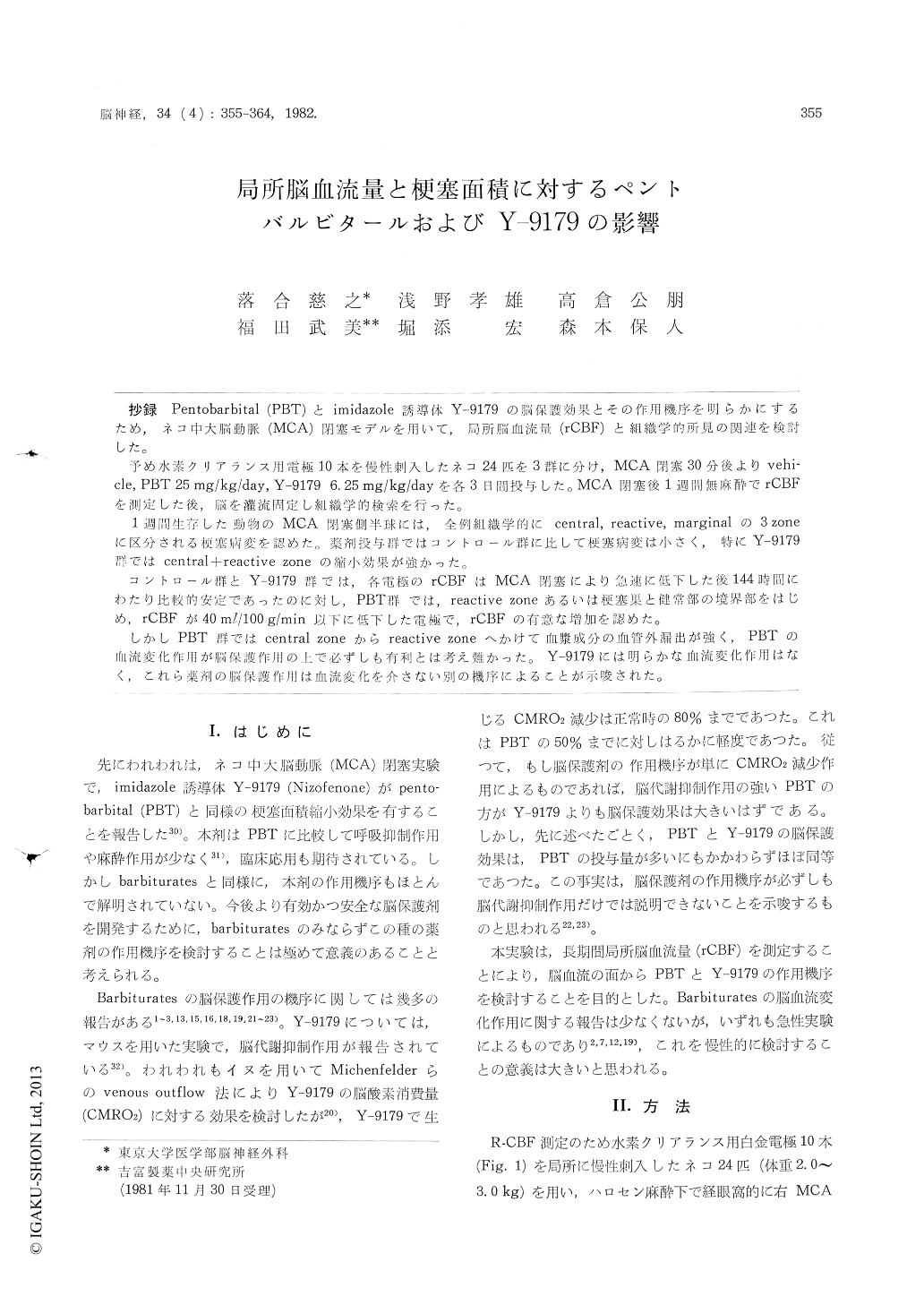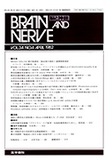Japanese
English
- 有料閲覧
- Abstract 文献概要
- 1ページ目 Look Inside
抄録 Pentobarbital (PBT)とimidazole誘導休Y−9179の脳保護効果とその作用機序を明らかにするため,ネコ市中大脳動脈(MCA)閉塞モデルを用いて,局所脳中血流量(rCBF)と組織学的所見の関連を検討した。
予め水素クリアランス用電極10本を慢性刺入したネコ24匹を3群に分け,MCA閉塞30分後よりvehi—cle,PBT 25mg/kg/day,Y−9179 6.25mg/kg/dayを各3日間投与した。MCA閉塞後1週間無麻酔でrCBFを測定した後,脳を灌流固定し組織学的検索を行った。
Following permanent occlusion of the middle cerebral artery (MCA) in cats, the effect of delayed administration of pentobarbital (PBT) and a novel imidazole derivative (Nizofenone or Y-9179) on the regional cerebral blood flow (rCBF) was studied. The rCBF was measured for one week by the hydrogen clearance technique without anesthesia. The overall effects of these drugs on histological changes were also assessed.
Twenty-four animals, in which platinum elec-trodes were chronically implanted in the ten prede-termined positions, were divided into following three groups. The control, PBT and. Y-9179 groups received the vehicle, PBT (25 mg/kg/day) and Y-9179 (6. 25 mg/kg/day), respectively. Drug admin-istration was started 30 min after MCA occlusion and continued for three days.
In the affected hemisphere of the animals which survived for one week, histological examination revealed ischemic lesions composed of the marginal, reactive and central zones. The infarction ratio calculated as the ratio of the damaged area to the whole hemispheric area was significantly smaller in the drug treated groups than in the control. In the Y-9179 group, the reduction of the area corn-prizing the central and reactive zones was parti-cularly prominent.
There were no apparent differences in the time-course of the rCBFs between the control and Y-9179 groups. Each channel showed reduction of the rCBF following MCA occlusion. Although slight fluctuations of the rCBF were seen during the first three to four hours, the initially dropped rCBF remained stable in both groups. In the PBT group, on the other hand, an increase of the rCBF took place following the administration of the drug in the area where the rCBF was initially reduced less than about 40 ml/100 g/min after MCA occlusion. Most of the electrodes showing such an increase in the rCBF topographically corre-sponded to the reactive or boundary zone.
In the control group, vasogenic edema charac-terized by the perivascular exudation of plasma fluid was prominent in the periphery of the central zone as well as in the inner layer of the reactive zone. Such changes were almost absent in the Y-9179 group, whereas it was more evident and close to the control in the PBT group.
So far as the correlation between the course of the rCBF and the final histological outcome was examined, there was no evidence indicating the benefitial effect of the redistribution of the rCBF by PBT. Y-9179 had no significant action on the course of the rCBF but its anti-edema effect might be related to its cerebral protective action. The mechanism of cerebral protection by PBT or Y-9179 needs further clarification.

Copyright © 1982, Igaku-Shoin Ltd. All rights reserved.


